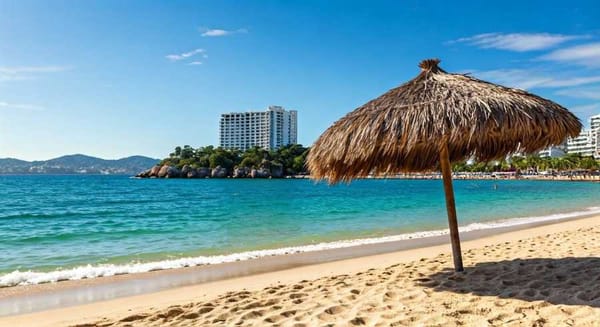How a Governor's Alibi Went Up in Smoke Faster Than a Cartel Safe House
Governor Rubén Rocha Moya of Sinaloa is embroiled in a scandal after a letter from Ismael "El Mayo" Zambada García linked him to the Sinaloa Cartel. Rocha Moya claimed to have been in Los Angeles on the day, but Customs and Border Protection sources reveal no record of his entry into the US.

On the morning of July 25th, a Lear 45 private jet soared into the skies above Culiacán. Its destination? Los Angeles. The aircraft touched down just after 11 a.m., and as it descended into the bustle of LA, another drama was unfolding back in Sinaloa that would reverberate far beyond the Mexican border.
Ismael "El Mayo" Zambada García, the enigmatic co-founder of the Sinaloa Cartel, found himself ensnared in a betrayal of Shakespearean proportions. Lured into a meeting by none other than his godson, Joaquín Guzmán López, Zambada was kidnapped and handed over to U.S. authorities. The man who had evaded capture for decades, eluding both rivals and law enforcement with equal skill, had been brought down not by cunning surveillance or a dramatic raid, but by a family member — a move straight out of the darkest family dramas.
But this was no ordinary betrayal. This was cartel business, and nothing is ever as it seems. What Zambada thought would be a routine negotiation to smooth out differences between local political figures turned out to be a carefully laid trap. Present at this fateful meeting were Héctor Melesio Cuén, the former rector of the University of Sinaloa, and Governor Rubén Rocha Moya. But Rocha, the governor, was notably absent. Or was he?
According to the governor’s official account, he was comfortably ensconced in Los Angeles at the time, enjoying a family vacation. He even produced an itinerary to prove that he had flown out of Culiacán aboard a plane operated by Servicios Ejecutivo Aéreos VIZ, S.A. de C.V., on the morning of July 25th. Case closed, right? Not so fast.
Enter the U.S. Customs and Border Protection (CBP), which threw a wrench into the governor’s alibi. A thorough search by CBP officials found no record of Rocha Moya entering the United States on July 25th — or on any nearby date. Using his full name, partial name, and even his date of birth, they came up with nothing. It was as if Rocha Moya had never crossed the border. This revelation sent shockwaves through both political and criminal circles, and the whispers that had long been circulating about the governor’s ties to the Sinaloa Cartel suddenly grew much louder.
The theory, bolstered by unnamed sources within the cartel itself, was that Rocha Moya had sent one of his secretaries — along with his personal cell phone — to Los Angeles to create the illusion that he had left the country. All the while, Rocha remained in Mexico, possibly even complicit in the trap that captured El Mayo. A cartel insider claimed, “That old man knew what was happening. He agreed to let Los Chapitos use his name to take down Mayo.”
While Rocha Moya vehemently denied any involvement, the stench of suspicion hung thick in the air. After all, this wasn’t the first time Rocha had been linked to the murky underworld of cartel politics. He had campaigned hard for the governorship, running three times for the position and finally securing it on the back of a relentless push to defeat the PRI-PAN-PRD alliance in Sinaloa. Along the way, rumors swirled about meetings with both Los Chapitos in Culiacán and Mayo Zambada in El Salado. These were not the sort of meetings that an upstanding politician holds in the light of day.
And then there was the murder of Héctor Melesio Cuén. Official reports painted his death as a robbery gone wrong at a gas station in Culiacán. But El Mayo, in his letter from behind bars, claimed otherwise. According to Zambada, Cuén had been killed at Huertos del Pedregal — at the very same time that Mayo himself was being kidnapped. If true, this revelation not only further clouded the governor’s alibi but also implicated Cuén in the broader conspiracy that had ensnared Zambada.
Two months on from Zambada's capture, Rocha Moya’s position as governor was looking increasingly untenable. A large portion of the population had lost faith in him, not least because of the explosive letter from El Mayo, which directly linked him to the nefarious dealings of the Sinaloa Cartel. Despite his protestations of innocence and the hurried release of his supposed flight itinerary, the mounting evidence was difficult to ignore.
As journalist Luis Chaparro uncovered, the U.S. military intelligence services had been closely monitoring the situation for months. Their investigations were not limited to Zambada's letter; Rocha Moya's connections to Los Chapitos and his involvement in Sinaloa’s spiraling drug war were also under scrutiny. Moreover, Chaparro suggested that the new Mexican president, Claudia Sheinbaum Pardo, had endorsed these investigations, signaling a potential shift in the country’s approach to combating cartel influence.
This marked a significant departure from the policies of Rocha Moya’s former ally, President Andrés Manuel López Obrador (AMLO), who had adopted a largely hands-off approach to the cartel problem, preferring to “hug, not shoot.” Under Sheinbaum’s leadership, however, it seemed that Mexico might be prepared to take a firmer stance. And with Rocha Moya now under investigation by both the U.S. and Mexican intelligence services, it was clear that his once-solid political foundation was beginning to crumble.
Of course, the governor's political career had been long intertwined with the drug trade, albeit through a web of plausible deniability. Prior to his governorship, Rocha Moya had maintained a cordial relationship with Héctor Melesio Cuén, despite their political rivalry. However, when Morena selected Rocha as its candidate for governor — a position Cuén also sought — the two men drifted apart. With Cuén now dead and Rocha's ties to Los Chapitos coming under increasing scrutiny, the full extent of their relationship was now called into question.
But politics in Sinaloa, like everything else in the region, is deeply rooted in cartel dynamics. For years, the state’s politicians and cartel leaders have played a dangerous game, each using the other to maintain power and control. Rocha Moya is just the latest in a long line of politicians to find himself caught in the crosshairs. The question now is whether he can weather the storm — or if his ties to the Sinaloa Cartel will ultimately be his undoing.
As the drug war in Sinaloa continues to escalate, leaving a trail of blood and destruction in its wake, the fate of Rocha Moya hangs in the balance. The public is divided: some see him as a pawn in a larger game, while others view him as an active participant in the cartel’s machinations. Either way, his days as governor appear to be numbered. What’s clear is that the political landscape of Sinaloa is changing — and as always, the cartels are at the center of it all.
If there’s one thing we know for certain, it’s this: in the world of Mexican politics and cartel power struggles, nothing is ever as it seems. Today’s ally could be tomorrow’s enemy, and the line between politician and kingpin is often all but invisible. As for Rocha Moya, his Lear jet may have landed, but his political career might be on its final descent.




